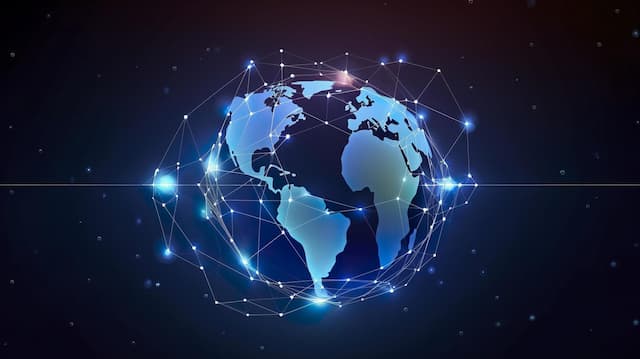
24 septembre - 26 septembre 2025
Graph Drawing
Aucun abonné pour le moment.
Aperçu
The 33rd International Symposium on Graph Drawing and Network Visualization (GD 2025) will be held in Norrköping, Sweden from September 24-26, 2025. This symposium focuses on the geometric representation of graphs and the algorithmic core of Network Visualization, with applications in various areas including data science, social sciences, and software engineering. The event includes a pre-conference PhD school, paper and poster submissions, and a graph drawing contest.
GD 2025: Call for Papers
The 33rd International Symposium on Graph Drawing and Network Visualization (GD 2025) will be held in Norrköping, Sweden, from September 24-26, 2025. A pre-conference PhD school will take place on September 22-23, 2025.
Download the call for papers as PDF
About GD 2025
Graph Drawing is concerned with the geometric representation of graphs and constitutes the algorithmic core of Network Visualization. Graph Drawing and Network Visualization are motivated by applications for which it is crucial to visually analyze and interact with relational datasets. Application areas include data science, social sciences, web computing, information systems, life sciences, geography, business intelligence, information security, and software engineering.
GD 2025 is designed to be held on-site. It is expected that regular papers are presented on site by one of the authors. To address the global challenges and as an offer for authors who are unable to attend we allow for a limited number of remote presentations.
The code of conduct for the GD conference can be found at http://graphdrawing.org/safetoc.html
Submission Tracks
GD 2025 has two distinct tracks:
- Track 1: Combinatorial and algorithmic aspects
- Design and analysis of graph drawing algorithms
- Geometric and topological graph theory
- Computational topology of graphs on surfaces
- Graph representations
- Geometric advances and computing in graph drawing
- Combinatorics and optimization in graph drawing
- Track 2: Experimental, applied, and network visualization aspects
- Engineering of graph drawing algorithms and network visualization systems
- Interfaces, methods, and high-quality tools for interacting with graphs and networks
- Benchmarks and experimental studies in the context of graph drawing and network visualization
- Cognitive studies on network visualization aesthetics and user interaction
- Visualization of networks in real world applications
- Machine learning methods in graph drawing & network visualization
- Graph drawing & network visualization for AI explainability
Other Submission Types
- Short Papers: Smaller and less elaborate contributions on relevant topics. Assigned a shorter time for presentation.
- Remote Presentation: For authors who cannot present in person. Authors have to register and submit a recording of their presentation two weeks after paper submission. Limited to six remote presentations.
- Posters: Late-breaking research results.
- Contest: Details at website.
Rules for Submission
Results that have been previously published (or are scheduled for publication) are not permitted, except for poster submissions. With the exception of remote presentations, each paper or poster must be presented at the conference by an author. ChatGPT and similar large language models may be used to improve the paper’s language, but its use should be mentioned as a footnote.
Submission Format
The proceedings will be published in the LIPIcs series. Submissions must be prepared in accordance with the LIPIcs author instructions.
- Use the LaTeX class file gd-lipics-v2.cls.
- Line limits:
- Full papers: 500 lines
- Short papers: 225 lines
- Posters’ abstracts: 80 lines
- Page limits (excluding references):
- Long papers: 15 pages
- Short papers: 7 pages
- Posters’ abstracts: 3 pages
The claims of full and short papers should be fully substantiated in the appendix.
Paper Submission, Proceedings and Special Issues
Submit via Easychair.
The proceedings will be published in the Leibniz International Proceedings in Informatics (LIPIcs) series and are available open access. Selected papers will be invited for submission to a special issue of the Journal of Graph Algorithms and Applications (JGAA). Two selected papers in Track 2 will be invited to submit a substantially extended version to IEEE Transactions on Visualization and Computer Graphics (TVCG).
Lightweight Double-Blind Review Process
The review process will be handled in a lightweight double-blind mode. Authors are not allowed to reveal their identity in the submitted paper. Poster submissions will be evaluated by the Program Committee in a single-blind mode.
Awards
- Best Paper Award for each track
- Best Presentation Award
- Best Poster Award
voted on by the GD 2025 attendees.
Important Dates
| Event | Date |
|---|---|
| Abstract submission deadline | June 3, 2025 |
| Paper submission deadline | June 10, 2025 |
| Notification of acceptance | July 23, 2025 |
| Poster submission deadline | August 22, 2025 |
| Notification of acceptance | September 1, 2025 |
| Final versions due | TBA |
| PhD school | Sept 22–23, 2025 |
| Symposium | Sept 24–26, 2025 |
All deadlines are 23:59 AoE.
Dates de la conférence
Conference Date
24 septembre 2025 → 26 septembre 2025
Soumission
(Abstract) Abstract submission deadline
3 juin 2025
(Paper) Paper submission deadline
10 juin 2025
(Poster) Poster submission deadline
22 août 2025
Notification
(Paper) Notification of paper acceptance
23 juillet 2025
(Poster) Notification of poster acceptance
1 septembre 2025
Autres dates
PhD school
22 septembre 2025 → 23 septembre 2025
Classement source
Source: CORE2023
Classement: A
Domaine de recherche: Theory of computation